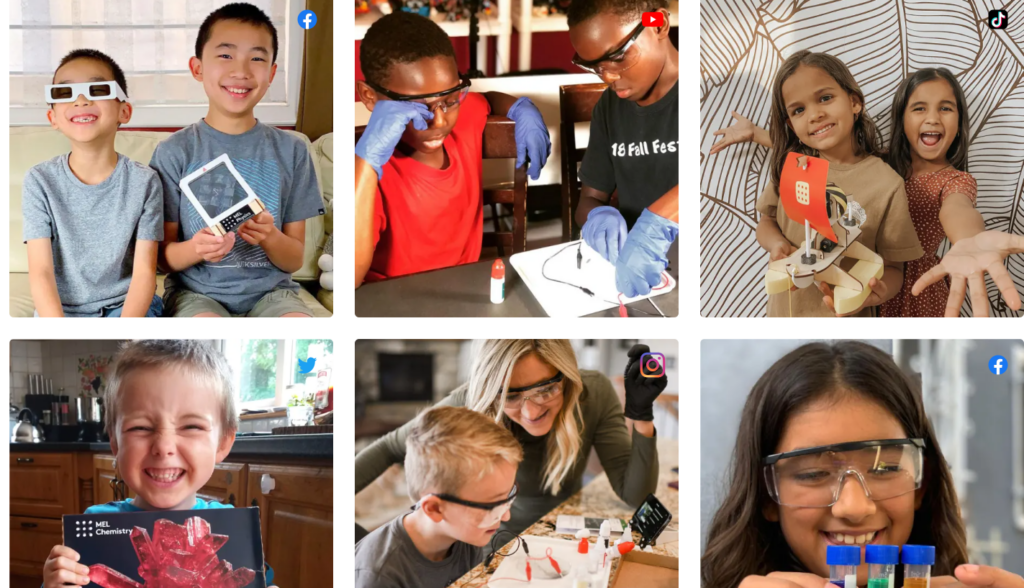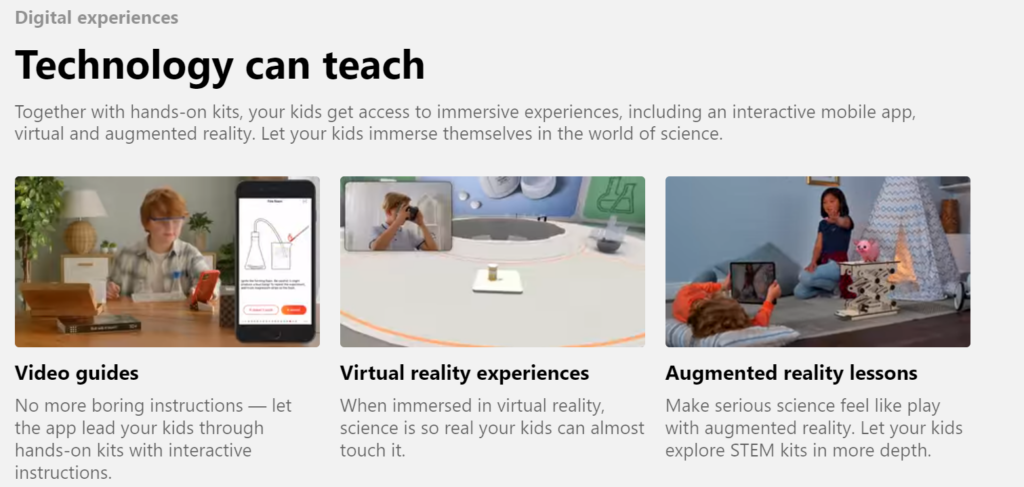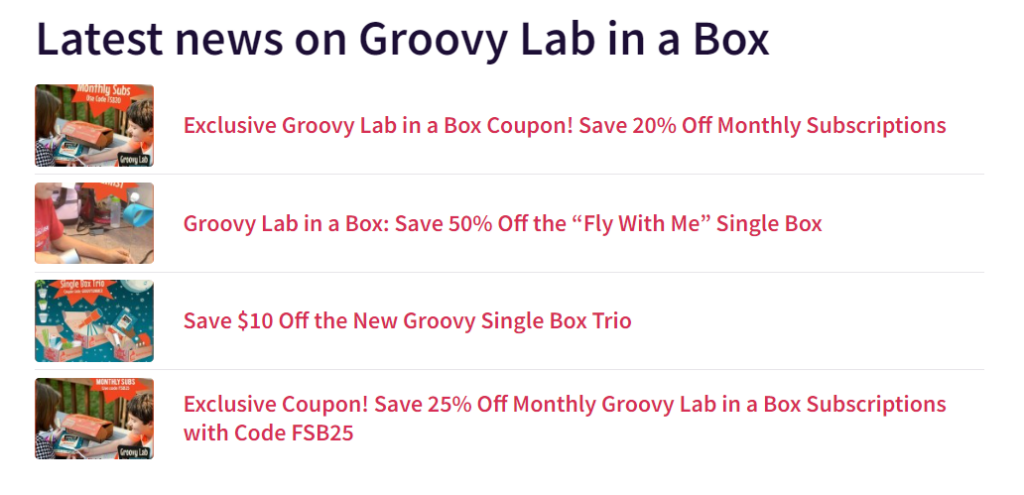Introduction
In today’s tech-savvy world, fostering a love for science in young minds has never been more crucial. Science kits that engage children in hands-on experiments not only help build their curiosity but also empower them with problem-solving skills. Two of the most popular subscription-based science kits on the market today are MEL Science and Groovy Lab in a Box. Both brands offer exciting science experiments for kids, aiming to make learning fun and engaging. However, each has its unique features, pricing, and educational goals. This post aims to provide a detailed comparison of MEL Science and Groovy Lab in a Box, helping parents and educators decide which one is better suited for their young learners.
Overview of MEL Science
MEL Science is a subscription-based service that offers science kits primarily aimed at children between the ages of 9 to 16. Founded in 2015, MEL Science provides a more tech-driven approach to learning science, combining traditional hands-on experiments with virtual reality (VR) and augmented reality (AR). The company’s goal is to make learning immersive, interactive, and future-ready by incorporating technology into the learning process.

With a focus on chemistry, physics, and STEM (Science, Technology, Engineering, and Math) education, MEL Science’s kits are structured to ensure that children get a deep understanding of complex scientific concepts. The kits include everything from safety equipment to high-quality chemicals and materials needed for experiments.
Overview of Groovy Lab in a Box
Groovy Lab in a Box, developed by Academics in a Box, is designed for children aged 8 and above, providing monthly hands-on STEM activities with a focus on engineering, design, and problem-solving skills. Unlike MEL Science, Groovy Lab in a Box is less tech-focused and more grounded in traditional, hands-on experiments. Their projects involve crafting, constructing, and exploring scientific concepts by doing rather than observing.

Groovy Lab in a Box emphasizes the importance of real-world application and includes a detailed Lab Notebook with each kit that guides young scientists through the engineering design process (EDP). The notebook also contains supplementary materials that encourage further research, critical thinking, and experimentation.
Features Comparison: MEL Science vs. Groovy Lab in a Box
1. Scope of Experiments
- MEL Science: Primarily focused on chemistry but also offers kits in physics and other STEM topics. Its kits often explore chemical reactions, molecular structures, and physics principles. The experiments tend to be more complex and can take longer to complete, which appeals to older children and teens.
- Groovy Lab in a Box: Leans heavily toward engineering and design challenges. Their kits encourage children to build models, design experiments, and solve real-world problems, making the experiments more accessible for younger kids. It’s more focused on construction-based experiments rather than the detailed chemistry or physics approach that MEL Science takes.
2. Educational Approach
- MEL Science: Uses advanced learning techniques, including virtual reality and augmented reality apps, to bring concepts to life. The VR experience allows children to dive deep into atomic structures or chemical reactions. Their educational content is rooted in both theoretical understanding and practical experimentation, making it highly immersive.
- Groovy Lab in a Box: Follows a more hands-on, tactile approach to learning. The inclusion of a detailed Lab Notebook that mirrors the scientific process is a standout feature. This notebook helps children develop the skills of inquiry, critical thinking, and reflection, similar to what real scientists do.
3. Technology Integration
- MEL Science: Incorporates VR and AR tools that provide a futuristic learning experience. The MEL Science app, available for both iOS and Android, enhances the experimental process by offering in-depth explanations and simulations. This feature gives MEL Science an edge for tech-savvy kids who enjoy digital learning.
- Groovy Lab in a Box: Does not use VR or AR, instead focusing on hands-on activities and real-world problem-solving. This makes it better suited for families who prefer to limit screen time and encourage more tactile, independent learning.
4. Customization and Subscription Flexibility
- MEL Science: Offers separate courses such as MEL Chemistry, MEL Physics, and MEL STEM, allowing parents to choose a kit that matches their child’s interest. The kits are available via a monthly subscription, and you can cancel anytime. MEL Science also offers individual kits for one-off purchases, which is a great way to test their products without a long-term commitment.

- Groovy Lab in a Box: Offers two subscription plans: a monthly box and a single box purchase. They also have special, one-time boxes for holidays and events, which provide flexibility for parents who may not want a continuous subscription. However, Groovy Lab does not offer as many topic-focused options as MEL Science, making it less customizable.

Pricing Comparison: MEL Science vs. Groovy Lab in a Box
1. MEL Science
- Monthly Subscription: Approximately $34.90 per month. Each box contains 2-3 chemistry experiments, and the subscription also gives you access to the MEL VR app, digital content, and a free starter kit that includes all the safety equipment.
- Separate Kits: MEL Science also offers individual kits, typically priced between $40 to $50, depending on the complexity of the experiments.
- Additional Costs: Access to the VR and AR features is included in the subscription, but you may need to buy a VR headset (if you don’t already own one), which adds to the overall cost.
2. Groovy Lab in a Box
- Monthly Subscription: $29.95 per month, which is slightly cheaper than MEL Science. Each box comes with one engineering or STEM-based activity, along with the Lab Notebook and additional resources for further learning.
- Annual Subscription: $287.40 for 12 months, which works out to $23.95 per box, making it a more affordable option for long-term subscribers.
- Special Edition Boxes: These one-time boxes are priced between $29.95 and $49.95, depending on the theme and complexity of the experiments.
FAQs: MEL Science vs. Groovy Lab in a Box
1. What age group are the science kits suitable for?
- MEL Science: Best suited for children aged 9 to 16, although some younger children may enjoy them with adult supervision.
- Groovy Lab in a Box: Designed for children 8 and older, but the experiments are generally more accessible to younger kids than those of MEL Science.
2. Do I need any additional equipment for the experiments?
- MEL Science: The kits come with everything you need for the experiments, including safety gear. However, for the full experience, especially the VR simulations, a VR headset is recommended.
- Groovy Lab in a Box: Most of the materials are included, but you may need basic household items like scissors, tape, or batteries for some experiments.
3. Are the experiments safe for children?
- MEL Science: Safety is a top priority. Each kit comes with goggles, gloves, and detailed safety instructions to ensure that children can conduct experiments without risk.
- Groovy Lab in a Box: The experiments are designed to be kid-friendly and safe, with minimal need for supervision, though younger children may still need assistance.
4. Can I pause or cancel the subscription?
- MEL Science: Yes, you can pause or cancel your subscription at any time.
- Groovy Lab in a Box: Yes, both pause and cancellation options are available.
5. What subjects do the kits cover?
- MEL Science: Primarily focuses on chemistry, physics, and general STEM topics. It’s best suited for children interested in science as a whole.
- Groovy Lab in a Box: Leans heavily towards engineering, design, and problem-solving challenges. It’s great for kids who enjoy building things and solving real-world problems.
6. How often do the boxes arrive, and how many experiments are included?
- MEL Science: The subscription delivers one box per month, containing 2 to 3 chemistry experiments. Some boxes are more focused on one specific topic, such as electricity or optics, with detailed instructions and additional digital content.
- Groovy Lab in a Box: The subscription is also monthly, but each box focuses on a single engineering challenge. These activities are typically centered around solving a real-world problem and include enough materials to keep children engaged for hours.
7. Can I pause or cancel my subscription easily?
- MEL Science: Yes, you can pause or cancel your subscription at any time through the account settings. The subscription is flexible, allowing you to manage it according to your needs.
- Groovy Lab in a Box: Similarly, you can pause or cancel your subscription at any time. They also offer single-purchase boxes, so you aren’t locked into a long-term commitment.
Conclusion: Which is Better for Your Child?
Choosing between MEL Science and Groovy Lab in a Box comes down to your child’s interests, learning style, and how tech-savvy they are. MEL Science offers a high-tech, immersive experience with its virtual reality integration, making it perfect for older children who are more inclined toward chemistry and STEM. Its experiments are challenging and well-suited for teens or kids with a strong interest in scientific subjects.
On the other hand, Groovy Lab in a Box is more hands-on and creative, with a strong emphasis on engineering and design. It’s more accessible for younger children and is ideal for families looking for screen-free learning that emphasizes the scientific process and problem-solving.
If you’re looking for a tech-enhanced, immersive experience, MEL Science is your best bet. However, if your child enjoys hands-on projects and prefers a more traditional, screen-free approach to learning, then Groovy Lab in a Box may be the better option. Both are excellent educational tools, and you can’t go wrong with either. Ultimately, it’s about finding the right fit for your child’s interests and needs.



